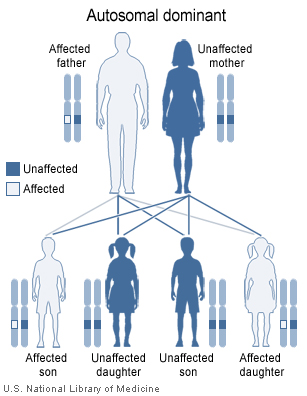Porphyria cutanea tarda causes: Difference between revisions
(Created page with "__NOTOC__ ==Overview== '''Porphyria cutanea tarda''' (PCT) is the most common subtype of porphyria. The disorder results from low levels of the enzyme responsible for...") |
No edit summary |
||
| Line 5: | Line 5: | ||
*In the acquired form, the signs and symptoms of this condition are triggered by non genetic factors such as alcohol abuse, excess iron, certain hormones, and viral infections. However, in the inherited form of the disease, which affects up to 20% of PCT patients, the condition arises from a mutation in the uroporphyrinogen decarboxylase gene, although environmental and chemical factors may trigger or exacerbate symptoms. | *In the acquired form, the signs and symptoms of this condition are triggered by non genetic factors such as alcohol abuse, excess iron, certain hormones, and viral infections. However, in the inherited form of the disease, which affects up to 20% of PCT patients, the condition arises from a mutation in the uroporphyrinogen decarboxylase gene, although environmental and chemical factors may trigger or exacerbate symptoms. | ||
*Drug side effect: [[Chlorpropamide]], [[Tolbutamide]], [[Tolazamide]] | *Drug side effect: [[Chlorpropamide]], [[Tolbutamide]], [[Tolazamide]] | ||
==Genetics== | |||
Inherited mutations in the ''[[UROD]]'' [[gene]] cause about 20 % of cases (the other 80 % of cases do not have [[mutation]]s in UROD, and are classified as sporadic). UROD makes an enzyme called [[uroporphyrinogen III decarboxylase]], which is critical to the chemical process that leads to heme production. The activity of this enzyme is usually reduced by 50 % in all tissues in people with the inherited form of the condition. | |||
Nongenetic factors such as [[alcohol abuse]], excess [[iron]], and others listed above can increase the demand for heme and the enzymes required to make heme. The combination of this increased demand and reduced activity of uroporphyrinogen decarboxylase disrupts heme production and allows byproducts of the process to accumulate in the body, triggering the signs and symptoms of porphyria cutanea tarda. | |||
The ''[[HFE]]'' gene makes a protein that helps cells regulate the absorption of iron from the digestive tract and into the cells of the body. Certain mutations in the ''HFE'' gene cause [[hemochromatosis]] (an [[iron overload disorder]]). People who have these mutations are also at an increased risk of developing porphyria cutanea tarda. | |||
In the 20% of cases where porphyria cutanea tarda is inherited, it is inherited in an [[autosomal dominant]] pattern, which means one copy of the altered gene is sufficient to decrease enzyme activity and cause the signs and symptoms of the disorder. | |||
[[Image:autodominant.jpg|thumb|center|20% of cases of porphyria cutanea tarda are inherited in an [[autosomal dominant]] pattern.]] | |||
==References== | ==References== | ||
{{reflist}} | {{reflist}} | ||
Revision as of 13:40, 3 June 2016
Overview
Porphyria cutanea tarda (PCT) is the most common subtype of porphyria. The disorder results from low levels of the enzyme responsible for the fifth step in heme production. Heme is a vital molecule for all of the body's organs. It is a component of hemoglobin, the molecule that carries oxygen in the blood.
Causes
- In the acquired form, the signs and symptoms of this condition are triggered by non genetic factors such as alcohol abuse, excess iron, certain hormones, and viral infections. However, in the inherited form of the disease, which affects up to 20% of PCT patients, the condition arises from a mutation in the uroporphyrinogen decarboxylase gene, although environmental and chemical factors may trigger or exacerbate symptoms.
- Drug side effect: Chlorpropamide, Tolbutamide, Tolazamide
Genetics
Inherited mutations in the UROD gene cause about 20 % of cases (the other 80 % of cases do not have mutations in UROD, and are classified as sporadic). UROD makes an enzyme called uroporphyrinogen III decarboxylase, which is critical to the chemical process that leads to heme production. The activity of this enzyme is usually reduced by 50 % in all tissues in people with the inherited form of the condition.
Nongenetic factors such as alcohol abuse, excess iron, and others listed above can increase the demand for heme and the enzymes required to make heme. The combination of this increased demand and reduced activity of uroporphyrinogen decarboxylase disrupts heme production and allows byproducts of the process to accumulate in the body, triggering the signs and symptoms of porphyria cutanea tarda.
The HFE gene makes a protein that helps cells regulate the absorption of iron from the digestive tract and into the cells of the body. Certain mutations in the HFE gene cause hemochromatosis (an iron overload disorder). People who have these mutations are also at an increased risk of developing porphyria cutanea tarda.
In the 20% of cases where porphyria cutanea tarda is inherited, it is inherited in an autosomal dominant pattern, which means one copy of the altered gene is sufficient to decrease enzyme activity and cause the signs and symptoms of the disorder.
